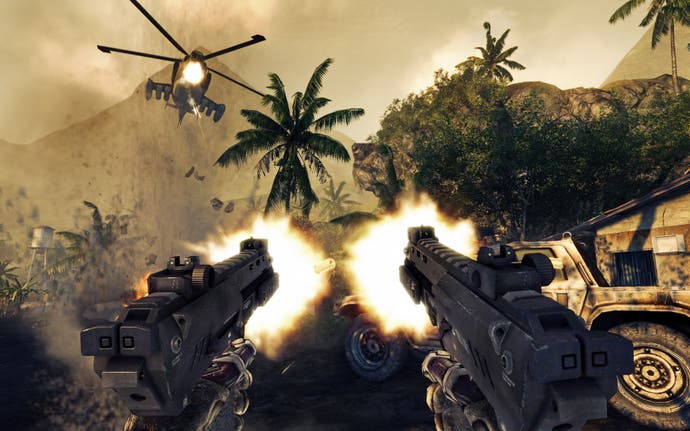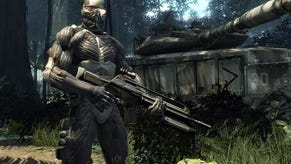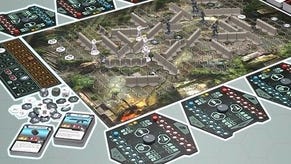Crysis Warhead
Ice to see you.
One of the strangest things about Warhead is that, while at times it practically beats you over the head with creaky old FPS conventions, more often than not it manages to make them feel fresh, or at the very least, intelligently crafted. Ideally, I'd rather not play another game with a mine section or a train section, or a set-piece where I have to defend an area against waves of enemies while a colleague does something clever and time-consuming with explosives behind me. But even though Warhead offers all these moments up, it puts its own spin on them - the mines are an on-foot rollercoaster, with beautifully gloomy shadows in which enemies can lurk, and fights erupting when you least expect it; the train section allows you to get on and off at will, running across the carriages and using the mounted guns, or racing off into the jungle to tackle enemies from an unexpected position before clambering back on. Even the defensive sections have an interesting twist, with the static turret turning out to be a red herring as often as not, and every nearby hiding space far more destructible than you might have expected.
And it's still surprising how good this game looks - and, more specifically, just how it manages to look that good. Because the original Crysis has such a reputation for technological brilliance in the graphics department, it's perhaps been unfairly underrated in terms of raw art direction. Warhead is not just packed with brilliant shaders and filters, it's often beautiful in terms of sheer composition. From the initial midnight insertion point down a flare-lit river, picking your way between rubble and flames under a deep blue starry sky, to the first appearance of the alien freeze, with beautifully sculpted half-pipes of frozen wave and an entire warship permanently paused mid-roll, this is a game which really cares about the environments it offers up.

And even if the single-player's short, with few new gadgets, enemies, or settings, there's always the multiplayer, with a rebalanced version of Power Struggle, and a new Instant Action mode, allowing for easy team death-matches across a smattering of old and new maps.
In the interests of full disclosure, I should point out that I was a pathetic, cringeful failure in all of these modes, dying comically at the hands of both fellow journalists and Crytek Budapest's shockingly effective QA department for the best part of a long, sad afternoon that I shall not soon forget. It's a testament to how good the multiplayer is that I still managed to enjoy my humiliation. In any case, I look forward to your kind, kind words on the subject in the comments section below.
But of course, this being Crysis, a single question remains. Will your hardware allow you to play the game this time around? Will it run on anything less powerful than the WOPR from WarGames? This issue has possibly been slightly over-stated, as a significant chunk of the PC audience were actually perfectly capable of running the original Crysis on some manner of settings the first time out. The difference here is that the game has been optimised for a lower spec machine, and a slightly sheepish Crytek have made it clear that they sounded off on the tech-melting requirements of the first game a little too loudly last year. The official specs for Warhead are:

- OS: Windows Vista / XP with SP2;
- Processor: 3.2 GHz for Vista 2.8 GHz for XP;
- Memory: 1.5 GB for Vista 1.0 GB for XP;
- Video Card: NVIDIA GeForce 6800 GT or greater; ATI Radeon 9800 Pro (Radeon X800 Pro for Vista ) or greater.
To put that in context, Crytek has built a machine from online parts capable of running Warhead on the second-highest graphics settings for USD 600.
To end on a tenuous analogy, Crysis Warhead is probably the Back to the Future II of videogames: rather than totally transform the story and setting, it returns to the original narrative, exploring it from a different angle; once again, the results are sharper, meaner, and have a lot more for you to think about (although, thankfully, there are no dodgy CGI sharks or Elisabeth Shue performances). The original Crysis may have given you the basic tools, but Warhead allows you to really use them, and while its previous titles made it clear that Crytek knew technology like few others, it's this strange off-shoot Warhead that proves it's no slouch when it comes to level design and set-pieces either.
Crysis Warhead is due out for PC on 19th September.













